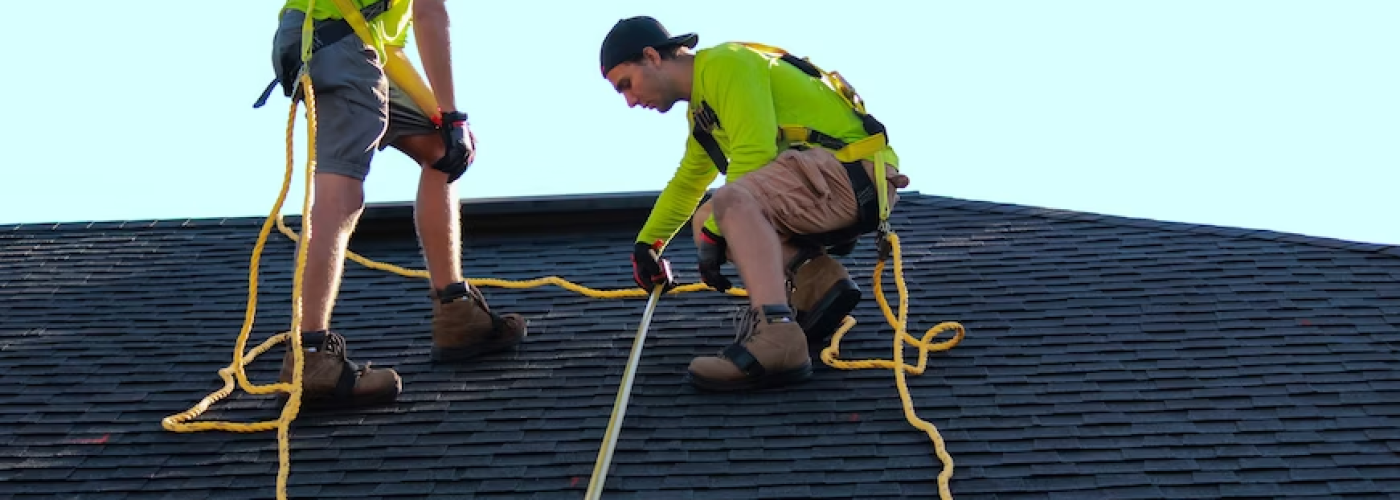A roof is designed to serve as the protective shield of your home, effectively guarding it against damage from rain, snow, and hail. However, every roof has a predetermined life expectancy, which means its days are always numbered. Although most roofing materials come with a specific lifespan, real-life factors, and maintenance routines can significantly influence how long your roof remains functional.
For example, proper upkeep and timely inspections can extend a roof’s life, but unexpected weather conditions or poor installation may cause an earlier deterioration. In other words, a roof’s actual life expectancy can be lower or higher than what’s stated on paper. As a homeowner, understanding this variation is essential to maximize your investment in your property and ensure that it stays protected for years to come.
Factors That Determine How Long You’re Roof Will Last
- Material Quality: The type of roofing material plays a crucial role in determining its longevity. Asphalt shingles, for example, typically last 15-30 years, whereas metal or tile roofs can last 50 years or more.
- Installation: A professionally installed roof with proper techniques and adherence to manufacturers’ guidelines is more likely to last longer than one hastily or poorly installed.
- Maintenance: Regular inspections and timely repairs can greatly improve your roof’s life expectancy. Keeping it clean and free from debris also prevents damage and deterioration.
- Weather Conditions: Extreme weather events like hailstorms, high winds, or heavy snowfall can cause significant wear and tear on your roof, reducing its overall lifespan.
- Ventilation: Proper attic ventilation ensures balanced air circulation, which helps prevent moisture buildup and heat damage that can prematurely age your roof.
The Lifespan of Different Roofing Materials
1. Asphalt Shingles:
These are one of the most common roofing materials and typically last 15-30 years, depending on the quality and maintenance.
2. Wood Shingles and Shakes:
With proper care and maintenance, these can last about 20-30 years. However, they may require more regular upkeep due to their susceptibility to moisture and insects.
3. Metal Roofing:
Offering impressive durability, metal roofs can have a lifespan of 40-70 years, depending on the specific material used, such as steel, aluminum, or copper.
4. Clay or Concrete Tiles:
These sturdy tiles can last anywhere from 50 to over 100 years, making them an excellent long-term investment for homes in suitable climates.
5. Slate Roofing:
Known for their durability and longevity, slate roofs can last 100 years or more, making them an attractive option for homeowners seeking a long-lasting solution.
Tips When Replacing Your Roof
No matter the climate your home is in, the roofing material you chose, or the maintenance efforts in place, roof replacement becomes inevitable at some point. When this time comes, it’s essential to plan accordingly and invest in a high-quality, long-lasting solution to protect your property for years to come.
One crucial consideration is seeking the services of experienced contractors with a reputation for professional roof replacements in your local area or professional roof replacements in Chicago. Working with a local roofer comes with several benefits, especially in areas like New Orleans where rainfall can be heavy, not to mention how unforgiving the heat, humidity, and storms/winds can be.
Local roofers have the experience and expertise to recommend the best roofing materials suitable for your area’s climate and building codes. They also understand the unique weather challenges faced by homes in your region and are better equipped to provide tailored solutions.
Entrusting your roof replacement to a skilled and reputable local professional will ensure a job well done, ultimately adding value and security to your property.
Things You Can Do to Prolong Your Roof’s Lifespan
To prolong your roof’s lifespan and keep it in tip-top shape after installation or replacement, implementing a regular maintenance routine is crucial. Inspect your roof periodically, especially after extreme weather events like storms or heavy snowfall.
Detecting problems early on, such as missing shingles, leaks, or damaged flashing will prevent further deterioration. Additionally, clean gutters and downspouts regularly to maintain proper water drainage and avoid damage caused by water overflow or ice dams.
Another helpful measure is ensuring proper attic ventilation. Balanced air circulation reduces heat buildup during hot summer months and prevents moisture accumulation in the colder months. This helps preserve the structural integrity of your roof by preventing warping or rotting due to vapor accumulation.
Investing time and effort into these preventive measures will ultimately save you money by extending the life of your roof while keeping your property protected from the elements.
In conclusion, understanding your roof’s lifespan and the factors that affect it is essential to ensuring your home remains protected and well-maintained. Emphasize regular inspections, maintenance, and working with experienced local professionals when roof replacement becomes necessary. With diligent care and attention, you can enjoy the numerous benefits of a durable, long-lasting roof for years to come.





